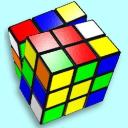Yahoo 知識+ 將於 2021 年 5 月 4 日 (美國東岸時間) 停止服務,而 Yahoo 知識+ 網站現已轉為僅限瀏覽模式。其他 Yahoo 資產或服務,或你的 Yahoo 帳戶將不會有任何變更。你可以在此服務中心網頁進一步了解 Yahoo 知識+ 停止服務的事宜,以及了解如何下載你的資料。
Find the two numbers...?
The following question came off the Mensa Puzzle Calendar for 2007.
"The square of the first number plus the second number equals 7. And the square of the second number plus the first number equals 11."
There's an obvious trivial solution, but there are also three other real solutions. I'm most interested in the 3 other solutions.
Answers must be provided in radical form, *not* as decimal approximations. Are you up to the challenge?
The calendar only provided the trivial answer so don't get any ideas of cheating off the calendar...
Who will be first with a non-trivial solution?
(2, 3) is the trivial case with integer solutions in Quadrant I. There are 3 other solutions in Quadrant II, III and IV.
Seems the drawing has expired. Here a graph of the two parabolas and the 4 intersections.
8 個解答
- DukeLv 71 十年前最愛解答
Why on Earth do You need them expressed in radicals?
Anyway, Peter has done all essential work above:
y³ + 3y² - 13y - 38 = 0, or
y³ + 3y² + 3y + 1 - 16y - 16 - 23 = 0, or
(y+1)³ - 16(y+1) - 23 = 0
The discriminant is 23²/4 - 16³ /27 = -2101/(4*27) < 0, so according the theory there are indeed 3 real roots; let ³√ denotes cubic root, i = √(-1) as usual, then
y = ³√(23/2 + (i/2)√(2101/27)) + ³√(23/2 - (i/2)√(2101/27)) -1
x = 11 - y²
Of course You should take care according the theory to combine the 3 complex values of the 1st cubic root with the proper values of the 2nd to obtain the 3 real values for y, the rest is easy.
I sincerely hope that calendars for 2008 will be, say with beautiful girls instead of parabolas on them!
Happy New Year to everybody!
- ?Lv 44 年前
yet in any different case to look at it using substitution: enable x and y be the two numbers. we could make 2 equations from the help given: (a million) x + y = 40 5 (2) x - y = 3 positioned the two equation in terms of x or y. it somewhat is least confusing to place #2 in terms of x: (2) x = 3 + y Then substitute into the different equation: (a million) x + y = 40 5 (a million) (3 + y) + y = 40 5 (a million) 2y = 40 5 - 3 (a million) y = 21 Then returned returned into #2 (2) x = 3 + y (2) x = 3 + (21) (2) x = 24
- 1 十年前
x^2+y=7
x+y^2=11
=>
(11-y^2)^2+y-7=0
x=11-y^2
=>
y^4-22y^2+y+114=0
but you're not interested in y=3, so, dividing by y-3,
y^3+3y^2-13y-38=0
which can be solved with Cardano's method for y and thus find x (this holds the other 2 real solutions). Obviously you could have made another choice at the beginning (solved for y) and been left with a polynomial in x (still third degree though).
One note though, "trivial" would not generally imply the (2,3) solution..
- 1 十年前
lets define a as the first number and b as the second
a^2 + b = 7
b^2 + a = 11 are the 2 statements you have up there.
rearranging b^2+a=11 we have
a = 11 - b^2
a^2 + b = 7
(11 - b^2) * (11 - b^2) + b =7
121 - 22 b^2 + b^4 + b = 7
b^4 - 22 b^2 + b = -114
b = 3 in which case a = 2
- 匿名1 十年前
Solving x^2+y=7 and x+y^2=11 simultaneously, we get x^4-14*x^2+x+38=0. This can be factored into (x-2)(x^3+2*x^2-10*x-19)=0. The solution x=2 comes from the first factor, the other three solutions satisfy x^3+2*x^2-10*x-19=0, which can be solved by a well-known formula in radicals:
x=2
or
1/6*(1268+12*I*
sqrt(6303))^(1/3)
+68/3/(1268+12*I*
sqrt(6303))^(1/3)-2/3
or
-1/12*(1268+12*I*
sqrt(6303))^(1/3)
-34/3*1/((1268+12*I*
sqrt(6303))^(1/3))-2/3
+1/2*I*sqrt(3)*(1/6*(1268
+12*I*
sqrt(6303))^(1/3)
-68/3*1/((1268+12*I*
sqrt(6303))^(1/3)))
or
-1/12*(1268+12*I*
sqrt(6303))^(1/3)
-34/3*1/((1268+12*I*
sqrt(6303))^(1/3))-2/3
-1/2*I*sqrt(3)*(1/6*(1268
+12*I*
sqrt(6303))^(1/3)
-68/3*1/((1268+12*I*
sqrt(6303))^(1/3)))
and for each x, y is 7-x^2.
- 匿名1 十年前
First number = x
Second number = y
x^2 + y = 7
x + y^2 = 11
x = 2
y = 3
I couldn't even aply any maths at it, just too easy.
- 匿名1 十年前
No




